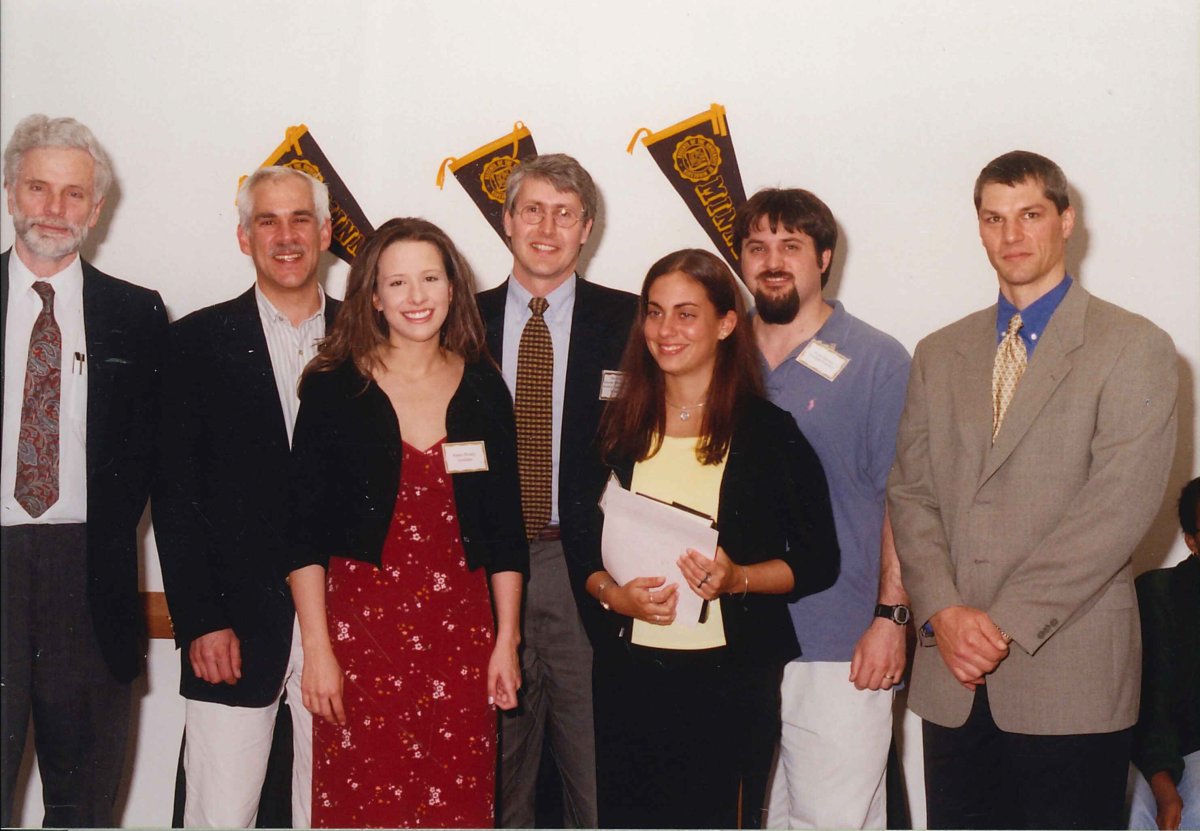Celebrating 20 years: The story of BME

December 2019—Twenty years ago, a charge was given to inaugural Head Bob Tranquillo to start the Department of Biomedical Engineering within what would become the University of Minnesota’s College of Science Engineering.
Since then, it has grown to 20 faculty members (with number 21 starting in 2021), climbed to number 14 in the U.S. News & World Report rankings, and broken new intellectual ground through its research endeavors.
“When we graduated our 1,000th undergraduate student, that’s when it really hit me,” says Professor Dave Odde, one of the originating faculty members, recalling the department's reception for the Spring 2018 graduates. “That’s when I knew we did it.”
Professor Tranquillo agreed, adding, “seeing all 1,000 names scroll across the screen really made me stop and be awestruck by what had happened over the past 20 years.”

Expanding research expertise
Initially Tranquillo envisioned two research pillars: cardiovascular engineering and neural engineering. Over the years, major grants in both areas rolled in—including a recent training grant from the National Heart, Lung, and Blood Institute—each serving as a testament to the department’s strengths and capabilities.
The department also broke new ground by building out a bigger, more diverse portfolio of faculty expertise. Today, faculty research interests expand from the molecular and cellular level all the way up to tissues and organs.
The department is also making impacts in other key health areas, such as cancer:
“Cancer bioengineering wasn’t part of my original vision, but reflects the innovation and vision of my peers,” explains Tranquillo, citing an $8.2 million grant from the National Cancer Institute to form a research center as a high-profile example of the department’s expertise in the area.
Ultimately, the department has been making a real-world impact with its research discoveries. Faculty members have helped form companies, filed for 358 patents, had 86 patents issued, and received 109 licenses for their technologies.
A location that maximizes opportunity
Like many departments, current and former faculty, staff, and students played critical roles in the department’s success. But in this particular case, so did the department’s enviable location.
“Minnesota is the place that spawned the whole field of biomedical engineering. It’s where the seminal work happened, including when Earl Bakken, an engineer and the founder of Medtronic, and a University of Minnesota surgeon, C. Walton Lillehei, created the first battery-operated, wearable pacemaker,” explained Odde.
At the University of Minnesota, the medical school and the engineering school are next door to one another and in the heart of one of the world’s most concentrated clusters of medical device companies. Odde added:
“Having all the relevant disciplines—engineering, medicine, physical sciences, and life sciences—on a small footprint has made Minnesota an incredible incubator. It’s generating technologies and ideas that extend beyond the traditional disciplinary boundaries and are ultimately driving medicine forward.”
For the Department of Biomedical Engineering, collaborations go beyond research endeavors.
“Local companies contribute funding and help educate our students by serving as speakers and instructors,” says Tranquillo, acknowledging major contributors such as Medtronic, Boston Scientific, and Abbott (formerly St. Jude Medical). “They’re crucial to our success.”
Local companies also consistently hire the department’s graduates. In fact, the vast majority of undergraduates who join a company after graduation do so at medical device and technology companies in the Minneapolis-St. Paul area. The eve of the department’s 20th anniversary is causing Odde to recognize the magnitude of this, saying:
“It feels really good to have alums whose work is making a meaningful, positive impact on people’s health and are also contributing to the overall health of our economy.”
Forging forward
Now the department—with new Head Brenda Ogle at the helm—strives to become even stronger. And new doors are opening with a new president, provost, and Medical School dean. As Odde explains:
“We have an opportunity to define the department’s next phase, and I’m excited to be part of that.”